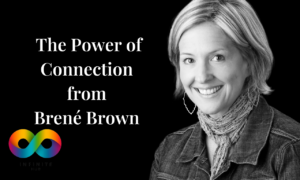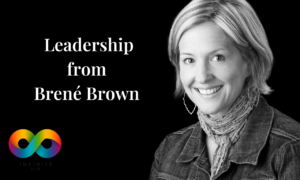Introduction to Zig Ziglar’s Philosophy
Zig Ziglar, a renowned motivational speaker and author, has left an indelible mark on the world of personal development. Known for his compelling speeches and insightful books, Ziglar’s philosophy centers around the importance of goals and the deeper motivations that drive individuals toward success. His teachings emphasize not just setting goals, but understanding the underlying reasons behind them—the ‘Why’—which provides the fuel for perseverance and achievement.
The Importance of Goals
Goals serve as the roadmap for our lives, guiding our actions and decisions. Setting clear, attainable goals gives us direction and purpose, helping to transform our dreams into reality. They provide a sense of accomplishment and satisfaction when achieved, and serve as benchmarks for our progress. By having goals, we can measure our success and stay focused on our personal and professional growth.
Understanding the ‘Why’ Behind Goals
The ‘Why’ behind goals refers to the deeper motivations and reasons that drive us to pursue certain objectives. It’s about understanding what truly inspires us and gives our goals meaning. This understanding can significantly enhance our motivation and commitment, helping us to overcome obstacles and stay focused on our path to success. The ‘Why’ is the emotional and psychological fuel that powers our journey.
Zig Ziglar’s Approach to Goal Setting
Zig Ziglar’s approach to goal setting is methodical and comprehensive. He encourages individuals to set specific, measurable, achievable, relevant, and time-bound (SMART) goals. His method involves clearly defining what you want to achieve, creating a detailed plan, and taking consistent action. Ziglar also emphasizes the importance of writing down goals, visualizing success, and maintaining a positive attitude throughout the process.
Finding Your ‘Why’
Discovering your ‘Why’ involves deep self-reflection and introspection. Techniques such as journaling, meditation, and seeking feedback from trusted friends and mentors can help uncover your true motivations. It’s about asking yourself questions like, “What am I passionate about?” and “What impact do I want to make?” Aligning your goals with your core values and passions ensures that they are meaningful and fulfilling.
Aligning Goals with Personal Values
When goals are aligned with personal values, they become more meaningful and motivating. This alignment ensures that your efforts are directed towards what truly matters to you, increasing the likelihood of success and satisfaction. Methods to align goals with values include identifying your core values, reflecting on past experiences, and setting goals that resonate with those values. For instance, if health is a core value, setting fitness goals would be a natural alignment.
Common Obstacles in Goal Setting
Goal setting is not without its challenges. Common obstacles include lack of clarity, fear of failure, procrastination, and distractions. To overcome these, it’s essential to break down large goals into smaller, manageable tasks, maintain a positive mindset, and seek support when needed. Case studies of successful individuals often reveal that overcoming such obstacles is a crucial part of their journey to success.
The Role of Passion and Purpose
Passion and purpose are fundamental drivers of goal achievement. Passion fuels enthusiasm and energy, while purpose provides a sense of direction and meaning. When your goals are aligned with your passions and purpose, you are more likely to stay committed and overcome challenges. Identifying what you are passionate about and understanding your purpose can transform your approach to goal setting.
Strategies for Staying Motivated
Staying motivated is essential for achieving long-term goals. Strategies to maintain motivation include setting realistic milestones, celebrating small wins, staying connected with your ‘Why’, and seeking inspiration from others. Tools such as motivational quotes, vision boards, and regular self-assessment can also help keep your motivation high and avoid burnout.
Creating a Vision Board
A vision board is a powerful tool for visualization. It involves creating a collage of images and words that represent your goals and dreams. This visual representation helps to keep your goals at the forefront of your mind, reinforcing your commitment and motivation. To create a vision board, gather images, quotes, and items that inspire you, and arrange them on a board or digital platform where you can see them daily.
Accountability in Goal Setting
Accountability is a critical component of successful goal setting. It involves taking responsibility for your actions and progress. Methods to stay accountable include setting deadlines, sharing your goals with others, and regularly reviewing your progress. Having an accountability partner or joining a group can provide support and encouragement, helping you stay on track.
Tracking Progress
Tracking your progress is essential for staying on course and making necessary adjustments. Tools for tracking progress include journals, apps, and spreadsheets. Setting regular check-ins and milestones can help you measure your success and make adjustments as needed. Tracking your progress keeps you focused and motivated, ensuring that you are moving steadily towards your goals.
Celebrating Achievements
Celebrating your achievements, no matter how small, is important for maintaining motivation and morale. It reinforces the positive behavior and effort you’ve put in, and encourages you to continue striving towards your goals. Methods of celebration can include rewarding yourself, sharing your success with others, or simply taking a moment to reflect on your accomplishments. Celebrating helps to acknowledge your hard work and keeps the journey enjoyable.
Impact of Goal Setting on Personal Development
Goal setting has a profound impact on personal development. It encourages continuous learning, self-improvement, and resilience. Personal growth stories often highlight how setting and achieving goals leads to increased confidence, skills, and a sense of accomplishment. By regularly setting and working towards goals, individuals can continually improve and evolve.
Zig Ziglar’s Success Stories
Zig Ziglar’s teachings have inspired countless individuals to achieve their dreams. Success stories from his followers often illustrate how his principles have led to significant personal and professional achievements. Interviews with these individuals reveal the transformative power of understanding their ‘Why’ and setting purposeful goals. These stories serve as powerful testimonials to the effectiveness of Ziglar’s approach.
Practical Applications of Ziglar’s Principles
Ziglar’s principles can be applied in various aspects of life, from personal growth to professional development. In business, his techniques can improve leadership, productivity, and team dynamics. In personal life, they can enhance relationships, health, and financial stability. Practical tips for implementation include setting clear objectives, maintaining a positive mindset, and continuously seeking improvement.
Balancing Short-term and Long-term Goals
Balancing short-term and long-term goals is essential for sustained success. Short-term goals provide immediate motivation and gratification, while long-term goals ensure sustained progress and fulfillment. Strategies to balance these include setting a mix of both types of goals, regularly reviewing and adjusting them, and ensuring that short-term efforts contribute to long-term objectives.
Overcoming Fear and Doubt
Fear and doubt can be significant barriers to goal achievement. Addressing these emotions involves building confidence, seeking support, and taking small, consistent steps towards your goals. Real-life examples of overcoming fear and doubt often highlight the importance of perseverance and the support of mentors and peers.
The Role of Mindset in Goal Achievement
A positive mindset is crucial for achieving goals. Developing a growth mindset, which embraces challenges and sees failures as opportunities for learning, can significantly enhance your ability to achieve your goals. Techniques to cultivate this mindset include positive affirmations, visualization, and surrounding yourself with supportive and positive influences. Stories of mindset shifts illustrate the transformative power of a positive outlook.
Setting SMART Goals
SMART goals are specific, measurable, achievable, relevant, and time-bound. This framework ensures that your goals are clear and attainable. To set SMART goals, start by clearly defining what you want to achieve, how you will measure success, ensuring the goal is realistic, aligning it with your overall objectives, and setting a deadline. Examples of SMART goals include specific financial targets, health milestones, and career achievements.
Using Affirmations for Goal Success
Affirmations are positive statements that can help you stay focused and motivated. They reinforce positive thinking and can help to overcome self-doubt and negative thoughts. Creating affirmations involves identifying your goals and framing them in positive, present-tense statements. Examples include “I am confident and successful in my career” or “I achieve my health goals with ease.”
Daily Habits for Goal Achievement
Daily habits play a crucial role in achieving goals. Consistent, positive habits such as regular exercise, healthy eating, and time management contribute to long-term success. Examples of effective daily habits include setting aside time for goal planning, maintaining a gratitude journal, and practicing mindfulness. Tracking and adjusting these habits can help ensure they support your goals.
The Connection Between Health and Goals
Physical health significantly impacts your ability to achieve goals. Maintaining good health through regular exercise, a balanced diet, and adequate rest ensures you have the energy and focus needed for success. Tips for maintaining health include creating a fitness routine, planning nutritious meals, and prioritizing sleep. Examples of the impact of health on goal achievement highlight how improved health can lead to better productivity and resilience.
Leveraging Support Systems
Support systems play a vital role in goal achievement. Having a network of supportive friends, family, and mentors can provide encouragement, advice, and accountability. Building a support network involves reaching out to like-minded individuals, joining groups or communities, and maintaining open communication. Examples of effective support systems include mastermind groups, mentorship programs, and online communities.
Technology and Goal Setting
Technology offers various tools and apps to aid in goal setting and tracking. These can help you stay organized, motivated, and accountable. Examples include goal-setting apps, productivity tools, and online communities. Leveraging technology can streamline the goal-setting process and provide additional resources and support.
Continuous Learning and Improvement
Continuous learning and improvement are key to achieving and sustaining success. This involves seeking new knowledge, skills, and experiences that align with your goals. Strategies for continuous improvement include taking courses, attending workshops, and reading books. Learning resources such as online platforms, libraries, and mentorship programs can provide valuable information and guidance.
The Role of Reflection in Goal Setting
Reflection is a critical part of the goal-setting process. It involves regularly reviewing your goals, assessing your progress, and making necessary adjustments. Methods for reflection include journaling, meditation, and feedback sessions. Examples of reflection practices highlight how regular self-assessment can lead to improved focus and goal achievement.
Adapting Goals to Life Changes
Flexibility is essential in goal setting, as life circumstances can change unexpectedly. Adapting your goals involves being open to change, reassessing your priorities, and making adjustments as needed. Examples of adapting goals include shifting career paths, changing fitness routines, and adjusting financial plans. This flexibility ensures that your goals remain relevant and achievable.
Setting Goals in Different Life Areas
Setting goals across different life areas ensures a balanced and fulfilling life. Personal goals might include health and wellness, hobbies, and relationships. Professional goals could involve career advancement, skills development, and networking. Financial goals might focus on saving, investing, and budgeting. Health goals could involve fitness, nutrition, and mental well-being. Examples of comprehensive goal setting illustrate how diverse goals contribute to overall success and satisfaction.
Zig Ziglar’s Legacy and Continued Influence
Zig Ziglar’s teachings continue to inspire and guide individuals worldwide. His emphasis on understanding the ‘Why’ behind goals remains relevant and impactful. Modern interpretations of his philosophy highlight how his principles can be applied in today’s fast-paced and dynamic world. The lasting influence of Ziglar’s work underscores the timeless nature of his insights and the ongoing importance of goal setting.
FAQs
What is the significance of understanding the ‘Why’ behind goals? Understanding the ‘Why’ provides the motivation and purpose needed to achieve goals, making them more meaningful and attainable.
How can I find my ‘Why’? Techniques such as journaling, meditation, and seeking feedback can help uncover your true motivations and passions.
What are SMART goals? SMART goals are Specific, Measurable, Achievable, Relevant, and Time-bound, ensuring they are clear and attainable.
How can I stay motivated while pursuing my goals? Maintaining motivation involves setting realistic milestones, celebrating small wins, and staying connected with your ‘Why’.
What role does accountability play in goal setting? Accountability ensures you stay responsible for your actions and progress, helping you stay on track towards your goals.
How can I balance short-term and long-term goals? Balancing short-term and long-term goals involves setting a mix of both types, regularly reviewing them, and ensuring short-term efforts contribute to long-term objectives.



